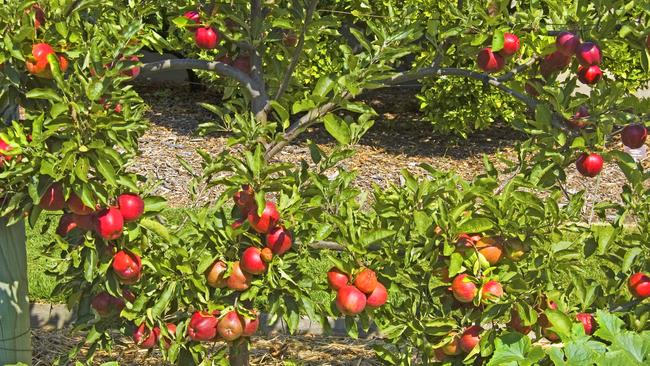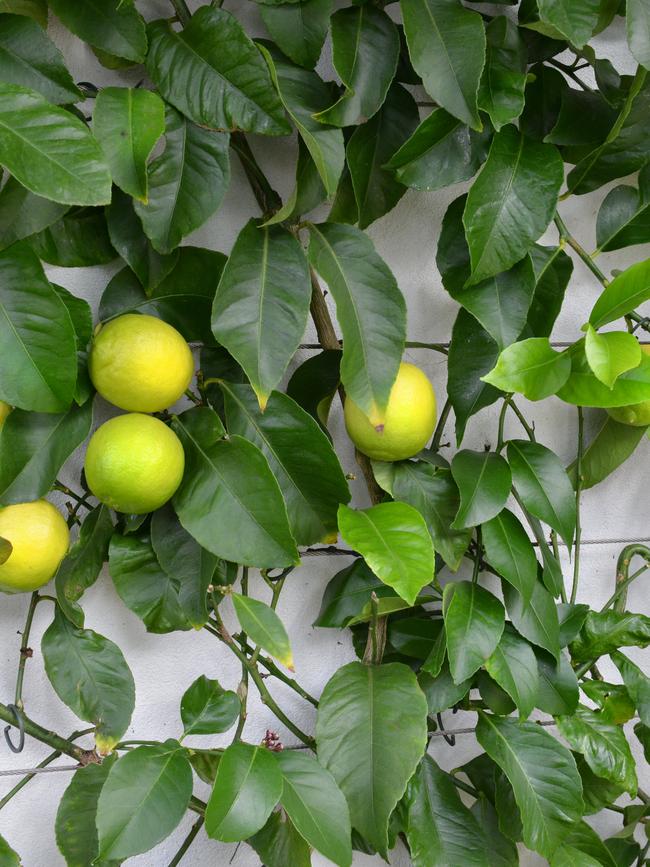Backyard espalier: Training plants to grow up the wall in your garden
Espaliering makes a lot of sense in smaller city gardens, and can be done with a range of fruit or floral favourites.

ARE you planning one of those trendy espaliers?
That’s fine, but you should realise espaliers are by no means a new thing.
They’ve practically been around since Adam was a boy.
The Pharaohs of ancient Egypt got on to espaliering plants thousands of years ago. Then came the agricultural monks of Europe, and some of the show-off gardeners of the Middle Ages turned it into an art form with all manner of crazy designs.
Frankly, I like my espaliers more practical and not overly pretentious.
Recently there’s been a return to espaliering because it makes so much sense in smaller city gardens with space at a premium and, done properly, it can be an architectural highlight that doubles as a source of fruit.
There is seemingly no limit to what can be espaliered, from apples, peaches, pears, pomegranates and plums to olives and citrus.
If it’s floral ones you desire, from camellias, crepe myrtles and bougainvilleas to gardenias and flowering quince.
If new to espaliering, start with one of the woodier plants and look to training branches out horizontally.
Decide if you want a simple, informal espalier, generally requiring minimal maintenance, or a more elaborate one that might demand more of your time.
Conventional espaliers are trained along parallel horizontal wires, generally about 200-300cm apart. For longevity and — yes, here’s that word again — a trendy look, use stainless steel marine wire.

If preferred, use just one wire, ideal when growing step-over style espaliers. The wire should be supported about every 1.5m.
If you’re lucky, you will find a plant with side branches at the right height to begin training straight off.
Otherwise, isolate and allow healthy looking buds to grow out to form radiating “arms”.
Cut off the top of the plant just below the highest wire, leaving strong buds either side to grow out as arms.
These arms, or laterals, are progressively trained along the wire using soft ties or ‘D’ clips, ideally in the prime October-March growing period.
Eliminate all irrelevant buds or shoots.
If you can’t be bothered with this set-up or want something more elaborate, buy a ready-started espalier and adapt to your situation.
I have a relative who grows these commercially for nurseries (Merrywood Plants) and the range of designs is amazing.
My most successful espalier to date has been a Eureka lemon attached to a panel of reo (metal reinforcing mesh) on the north side of an old timber farm shed.
I picked up a lemon tree for a few dollars from the reject section of a nursery.
It was in such a pitiful state, lopsided and lean with branches splaying in all directions, obviously no one would pay anywhere near full price.
My wife thought I was crazy when I picked it out, but for what I wanted it was ideal. All that was needed was removal of a few branches to bring it back to a flat plane, and voila.
For about eight years it’s been bearing beautifully, producing plentiful crops of large, juicy lemons.
I suspect it’s such a good performer because I took the advice of a colleague and mentor, long-gone TV gardener Kevin Heinze, who once told me lemons in Victoria demand two things: a warm spot and protection from cold winds.
This lemon has both. Being on a north-facing wall, the timber retains warmth over colder periods and it’s protected from cold southerlies.
I have failed dismally growing other lemons in the open on our quite windy property, yet this one is the perfect fruiting tree, requiring minimal attention apart from watering, an occasional handful of a citrus-specific fertiliser and trimming of wayward branches.
While it looks raggedy at certain times, due to a lack of clinical pruning, it boasts a certain rustic charm.
I love it.


